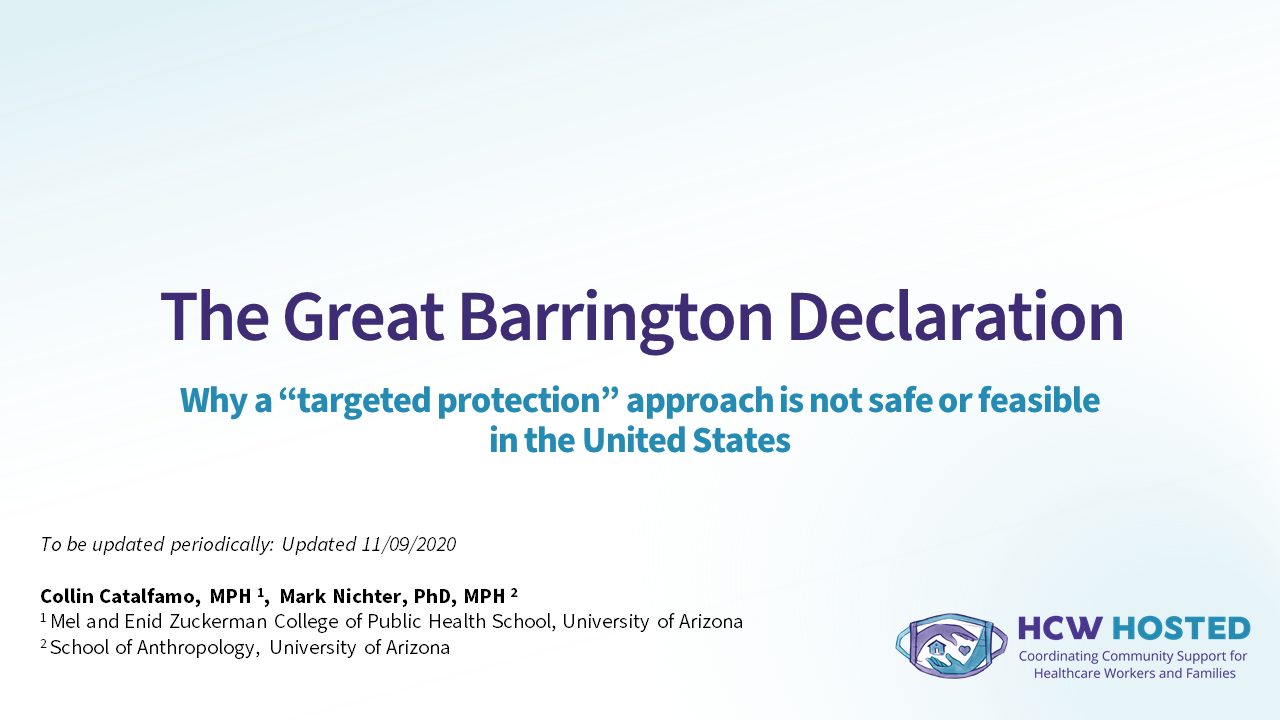Last updated by our Medical Anthropology & Epidemiology Team on 11.09.2020
The Great Barrington Declaration
The Great Barrington Declaration is a strategy put forth by a VERY small population of scientists suggesting that the best way to curb the COVID-19 pandemic is to implement what they coin as “targeted protection.” This approach would apply COVID-19 restrictions ONLY to those who are at higher risk of developing severe COVID-19 disease or death while allowing everyone else to resume life as normal pre-COVID. In order to prevent societal harm and excessive death from the disease, it would rely on individuals who are at a lower risk of death from COVID-19 developing temporary immunity through infection. The thought is that if enough of the population gains this temporary immunity through infection, then transmission of the virus will be substantially reduced.
The societal harms that can occur as a byproduct of extended, restrictive lockdowns are very real; however, the Great Barrington Declaration (as well intentioned as it might be) possesses critical flaws.
Why is it dangerous?
-
- It assumes that transmission can be substantially reduced at an extremely low prevalence of immunity to COVID-19. Furthermore, it assumes that immunity to COVID-19 from infection is lifelong and reinfection is not possible (we know this isn’t true).
- It ignores the fact that even younger individuals (those younger than 65) can develop severe disease requiring hospitilization.
- It ignores the morbidity associated with the disease and only focuses on mortalitly. We now know that a significant percentage of people who develop COVID-19 (even mild illness) go on to develop long term symptoms.
- It does not advocate for protective measures such as physical distancing or the wearing of masks, and does not promote testing and contact tracing in order to reduce transmission of the virus that causes COVID-19.
- It overlooks just how many individuals in the US are at high risk of severe illness and death due to pre-existing chronic health conditions.
- It would disproportionately impact sectors of the community that are unable to work from home due to essential occupations.
The John Snow Memorandum
The John Snow Memorandum, on the other hand, was drafted, reviewed, and published in response to the Great Barrington Declaration. It advocates for continued evidence-based restrictions and disease mitigation strategies. Signers of the memorandum believe this will lower viral spread to very low levels where testing and contact tracing can be utilized to eliminate or stop the further spread of outbreaks.
Furthermore, the authors of the memorandum advocate for the development and implementation of social programs to minimize the harms of necessary restrictions. We know that this strategy does work if lockdowns are used effectively to build up pandemic response capacity. Other countries such as Japan, Vietnam, and New Zealand have all been effective when utilizing evidence-based approaches similar to that outlined in the John Snow Memorandum.
For more detailed information regarding The Great Barrington Declaration & John Snow Memorandum, view our presentation on this topics below.

